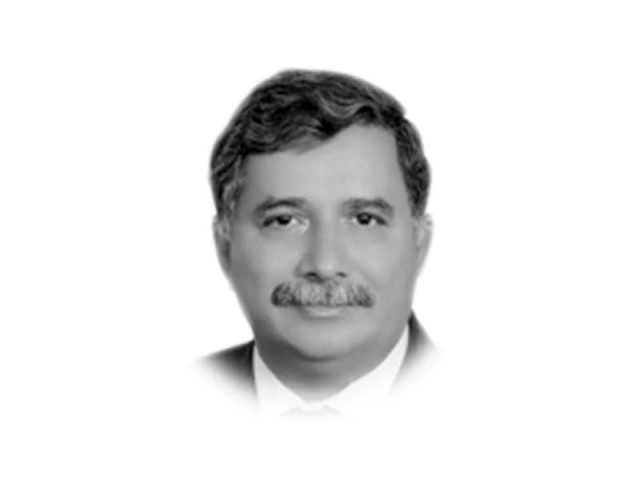
Initially, the parleys between the US and the Taliban revolved around four points: the withdrawal of the US and foreign forces from Afghanistan; Taliban pledging no use of the Afghan soil for terrorism abroad; intra-Afghan dialogue; and a ceasefire. The Taliban were pretty sure that a unilateral peace agreement would be reached with the US without the announcement of a ceasefire and the involvement of the Afghan government in the talks. But the US pulled out of the dialogue process, and the intra-Afghan dialogue also took a backseat. However the situation took a new turn due to the elections in Afghanistan. Despite aggressive attacks to disrupt the election process, Afghans went to the polls, re-electing Ashraf Ghani as President. This certainly pushed the Taliban into the background and strengthened the position of Ghani’s government.
The talks appeared to have ended for good, but as they say that politics is an art of possibilities, the prospects of the talks restarting on new terms and conditions cannot be ruled out, as also suggested in my these columns earlier. The Taliban were more willing to latch on to any opportunity on the negotiating table which they had lost due to their refusal to stop violence on the ground. Amidst backchannel contacts, both sides agreed to resume the dialogue in Qatar. The new initiative tried to pave the way for direct talks between the Taliban and the government in Kabul, ultimately hammering out a peace deal.
In response to the Taliban’s 10-day truce offer, the Afghan government demanded a complete ceasefire. Similarly, Secretary of State Mike Pompeo demanded of the Taliban to show that they were really serious about reaching a deal that would bring peace to Afghanistan and pave the way for the withdrawal of US troops. For this they have to “demonstrate either their will or their capacity, or both, to deliver on a reduction in violence,” said Pompeo at a news conference in Uzbekistan earlier this month. The latest Pentagon reports also suggest the level of escalation of violence, jeopardising security and safety as part of a “fight-and-talk” strategy with the objective of upsetting the democratic process, and bringing the US government under pressure by delegitimising the Afghan government.
With the increase in violence on the part of the Taliban and counter-offensives by the US and the Afghan government, the peace talks derailed again. Khalilzad, in his recent meeting with President Ghani, also intimated that there had been no significant progress in the peace talks. The Afghan government rejected the ceasefire offer calling it “ambiguous” and “with no legal parameters”. Khalilzad emphasised on a complete ceasefire and the inclusion of the Afghan government in the talks. Without the Afghan government, such talks would bear no fruit. At the same time, the Afghan president has confidently stated that he has no problems dealing with President Trump, and the call for decreasing the number of American troops operating in the Central Asian country would have no impact on their capacity and willingness to move forward. He also sounds optimistic that the Afghan society is willing to absorb the Taliban if the insurgent group expresses readiness to end violence. While insisting that the Afghan security forces have the capacity to meet the challenges, Ghani warns that the Taliban must not see peace as a Trojan horse to overthrow the government and take hold of the Afghan society. If they tried to do so, he cautioned, the society and the government would mobilise, as “our security is not the responsibility of the United States. It is our responsibility. We need to be able to secure our future”.
The events unfolding so far and the statements so far made suggest that all three parties to the conflict are in a state of confusion, trying whatever they can to gain more on the dialogue table. However, the geopolitico scenario has also changed with the killing of Gen Qasem Soleimani, and Iran striking vital US installations in retaliation, bringing the two sides on the brink of a war. The Middle East is also boiling due to a cold war within the Muslim world and Trump’s announcement of the Middle East peace plan. Moreover, the strategic interests of the US have not changed. In such a situation, the US would require bases at all strategic locations not only for surveillance but also for keeping a tight grip on the region. The US, therefore, appears in no hurry to go for a complete withdrawal from Afghanistan. The US presence in the country will continue in one form or the other, and require a friendly government there. It is now for the Taliban to understand the newly emerging realities and re-adjust to the prevailing situation. The only possible way to peace is for the Taliban to announce a comprehensive ceasefire and agree to hold direct talks with the Afghan government. In the first phase, the Taliban may agree to a power-sharing formula and integration into the political system. In the second phase, they may work to gain political power through the process of ballot.
The road to peace in Afghanistan lies in give and take and not in violence. This is only how we can see an era of death, destruction and displacement in Afghanistan come to an end.
Published in The Express Tribune, February 12th, 2020.
Like Opinion & Editorial on Facebook, follow @ETOpEd on Twitter to receive all updates on all our daily pieces.












COMMENTS
Comments are moderated and generally will be posted if they are on-topic and not abusive.
For more information, please see our Comments FAQ